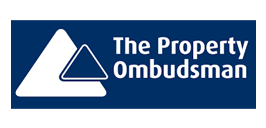
Many properties, especially flats, are sold on a leasehold basis and the lease usually contains provisions relating to the use of common parts, responsibility for maintenance, insurance etc.
When you buy a leasehold property you are not really buying the bricks and mortar or the land on which the property sits; you are buying the right to inhabit the property for the term of the lease. Often, this may seem to amount to the same thing especially where the lease is for 999 years, for example
However, many leases were mostly granted for a term of 99 years at a nominal ground rent which did not increase although more recently leases are granted for longer periods at a much higher ground rent and with frequent increases.
Many 99-year leases now have a short unexpired term which makes it difficult when coming to sell the property as mortgage finance is not readily available for such short leaseholds.
The shorter the lease, the more difficult it is to get a mortgage. Most mortgage lenders will not lend on properties with a lease under 70 years. They want the lease to extend for at least 40 years after the end of your mortgage term so that the value of the property will not be affected. – values reduce as the lease gets shorter.
All is not lost as legislation is now in place which subject to certain qualifying criteria gives you the right to extend your lease.
Extending the lease (Leasehold Enfranchisement)
You can ask the landlord (the Freeholder) to extend your lease at any time.
You might be able to extend your lease by:
- 90 years on a flat – if you qualify
- 50 years on a house – if you qualify
Leaseholders who own flats can either extend their leases under the law if they meet certain criteria (formal route), or by asking the freeholder to see whether they are willing to negotiate a lease extension informally (informal route).
Formal Route
Under this route, the freeholder and the leaseholder need to follow a procedure and strict timescales which are set out in the law. This route offers more protection to a leaseholder as if the parties cannot agree on the terms and/or the price leaseholders can apply to an expert Tribunal to decide on the issue.
Formal Procedure
A Section 42 notice under the 1993 Act is served on the freeholder outlining intention to extend the lease specifying a date for a response within two months of the date of the serving of the notice. If the landlord does not respond within the two months or responds late, the leaseholder can apply to the County Court for a lease extension on terms set out in notice within six months from the date the freeholder is supposed to serve the counter-notice. The correct wording of the notices, dates for response are critical including ensuring that notice is served to the freeholder’s correct address to avoid delays and additional costs to the leaseholder.
What happens if agreement on an extension cannot be reached?
If a party cannot agree on a premium (the value), the application can be made to the First-Tier Tribunal (Lands Chamber) for determination. Professional advises working on behalf of both parties would try and negotiate a price first to avoid delays and costs.
Informal route
Under this route, a leaseholder can approach the freeholder in the first instance and ask whether they are interested in negotiating a lease extension. There is no obligation on the freeholder to respond or to agree to extend the lease following this request. If the freeholder agrees then both parties will have to negotiate.
It is worth starting the process informally as it could save time and money, but if negotiations fail, then leaseholders who qualify can use the formal route to try and extend their lease and go to the Tribunal if no agreement on the price or terms can be reached.
Eligibility
A leaseholder with an unexpired term of 21 years or more on the original lease and who has owned the property for two years or more can apply for an extension under the Leasehold Reform, Housing and Urban Development Act 1993.
The owner does not have to occupy the property but must be the registered owner.
Period of extension
A successful application for flats adds 90 years to the unexpired term of the lease and for houses 50 years. Benefits of extending include adding extra value to the property and not having to pay ground rent for the duration of the extended lease.
How much will it cost?
It may be stating the obvious but the shorter the lease the more it will cost to extend it – the reason being that (in theory) at the end of the lease the property reverts back to the freeholder
The Leasehold Advisory Service’s (LAS) lease extension calculator gives you a guide to the costs of extending the lease of a flat – link below
https://www.lease-advice.org/calculator/
A leaseholder applying under the 1993 Act (formal route) is liable to pay the landlord’s legal and valuation costs.
Leases with 80 years or less unexpired terms incur additional costs as marriage value is payable. Marriage value is the increase in the value of a property arising from the grant of a new lease and is included in the calculation of the premium (cost of extension)
Before embarking on applying for the extension you should have a financial plan in place as costs can increase and the applicant is liable for the freeholder’s reasonable costs.
Seeking professional advice
Leaseholders should seek professional advice from a chartered surveyor specialising in leasehold valuations and a solicitor. Chartered Surveyors are members of the Royal Institute of Chartered Surveyors (RICS) and the below link will enable you to find a local surveyor.
There are two main web sites to go to for general advice and further information: are below
https://www.gov.uk/leasehold-property/extending-changing-or-ending-a-lease
and






